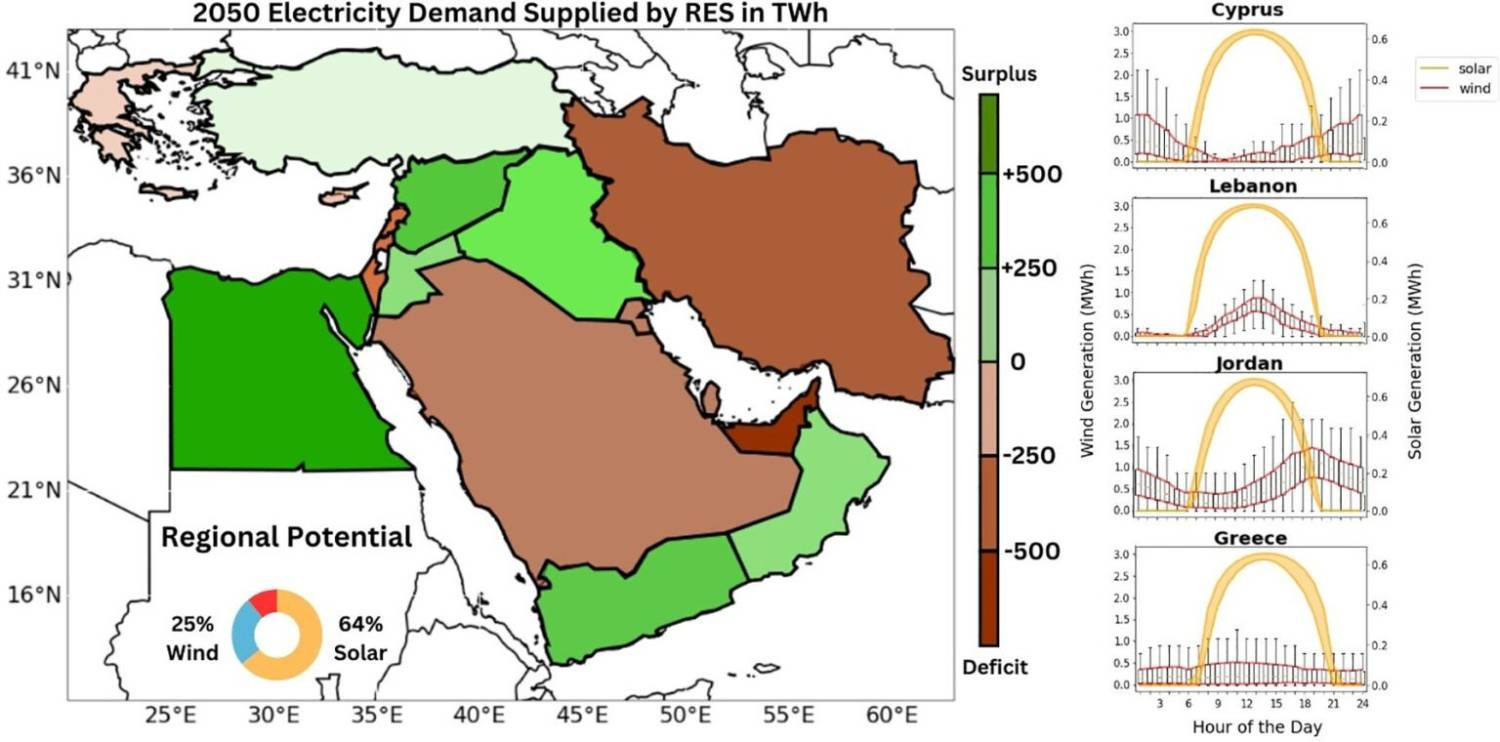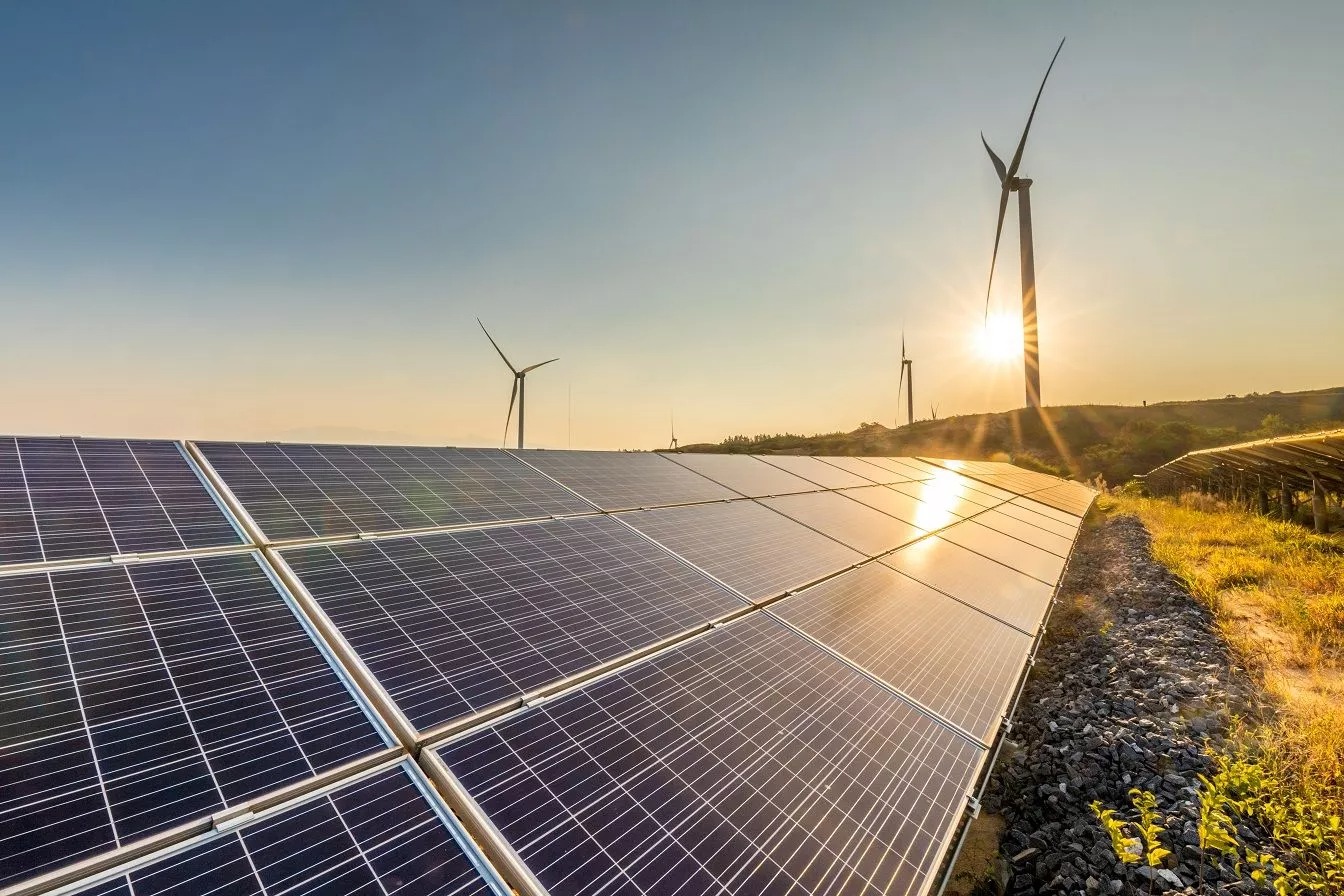Study highlights the potential of Solar and Wind Energy in the Eastern Mediterranean and Middle East until 2050 according to the Cyprus Institute.
Specifically, the study, conducted by the Centre of Excellence for Climate and Atmospheric Research (CARE-C) of the Cyprus Institute (CyI), and published in the reputable scientific journal Science of the Total Environment, emphasises that the region could cover most of its increasing energy demand through Renewable Energy Sources from public utility companies.
The transition from conventional fuels to Renewable Energy Sources has created unprecedented opportunities for energy self-sufficiency. With large-scale solar and wind energy shaping this transition, precise spatial positioning is crucial to ensure effective integration into the grid, taking into account current and future climate variables.
The research, based on a meteorological and atmospheric chemical prediction model, provides significant information regarding the technical potential of Renewable Energy Sources across all countries in the Eastern Mediterranean and Middle East. By mapping hourly production profiles, by source and country, simulating from 2015 to 2050, the study identifies potential energy surpluses and deficits throughout the region.
At the same time, it identifies four dominant patterns of wind and solar energy production, providing valuable information for energy system managers. For example, Greece has the potential for seamless grid integration, as it exhibits almost continuous wind energy potential.
As the world looks towards a sustainable energy future, harnessing the abundant wind and solar resources in the Eastern Mediterranean and Middle East region could pave the way for significant socio-economic and environmental benefits.

Some of the key findings of the study are:
- 89% of the projected energy demand in the AMME region by 2050 could be met by large-scale Renewable Energy Sources. Specifically, the research predicts that Egypt will emerge as an “energy surplus powerhouse,” with the potential to achieve a surplus energy production of 76 GW per hour and become an RE hub in the region.
- Regarding Cyprus, Greece, and Turkey, solar resources are particularly predictable, albeit with significant variability during the winter. Specifically, Cyprus will require energy storage capacity. Meanwhile, the United Arab Emirates and Iran may face electricity deficits if they rely solely on Renewable Energy Sources.
- Overall, the wind energy potential is generally low, with only limited areas meeting the required wind speed criteria. Countries like Cyprus, Israel, and Lebanon have only 2-6 network sites meeting the defined standards. In contrast, Greece, Oman, and Yemen have the highest potential for exploiting offshore wind farms.
- Cyprus presents a strong inverse relationship between wind and solar energy and requires energy storage solutions. It exhibits a wind production pattern in a V-shape, characterised by a positive correlation. During the summer, the lowest production occurs between 09:00 and 12:00, contrasting sharply with the peak between 21:00 and 03:00.
- Solar energy production peaks between 10:00 and 16:00, creating a clear inverse relationship between the two renewable energy sources. This relationship is further evident as the optimal combined RE performance occurs only for 2-3 weeks annually, while more than 3 months show low performance, primarily during the autumn months and between 03:00-06:00.
- The strong inverse relationship between wind and solar electricity sources observed in Cyprus may lead to reduced overall production at two inflection points, i.e., when wind production starts to decrease before solar radiation begins to increase, and vice versa. This creates the need for short-term energy storage systems.
The lead author of the study, doctoral candidate Pantelis Kyriakidis, stated: “Our findings indicate the transformative potential for the AMME region, with the possibility of seven countries becoming net energy exporters by 2050. However, it is imperative that policymakers consider the complementary and compensatory relationships between solar and wind energy production, as well as seasonal fluctuations, for effective energy planning.”






